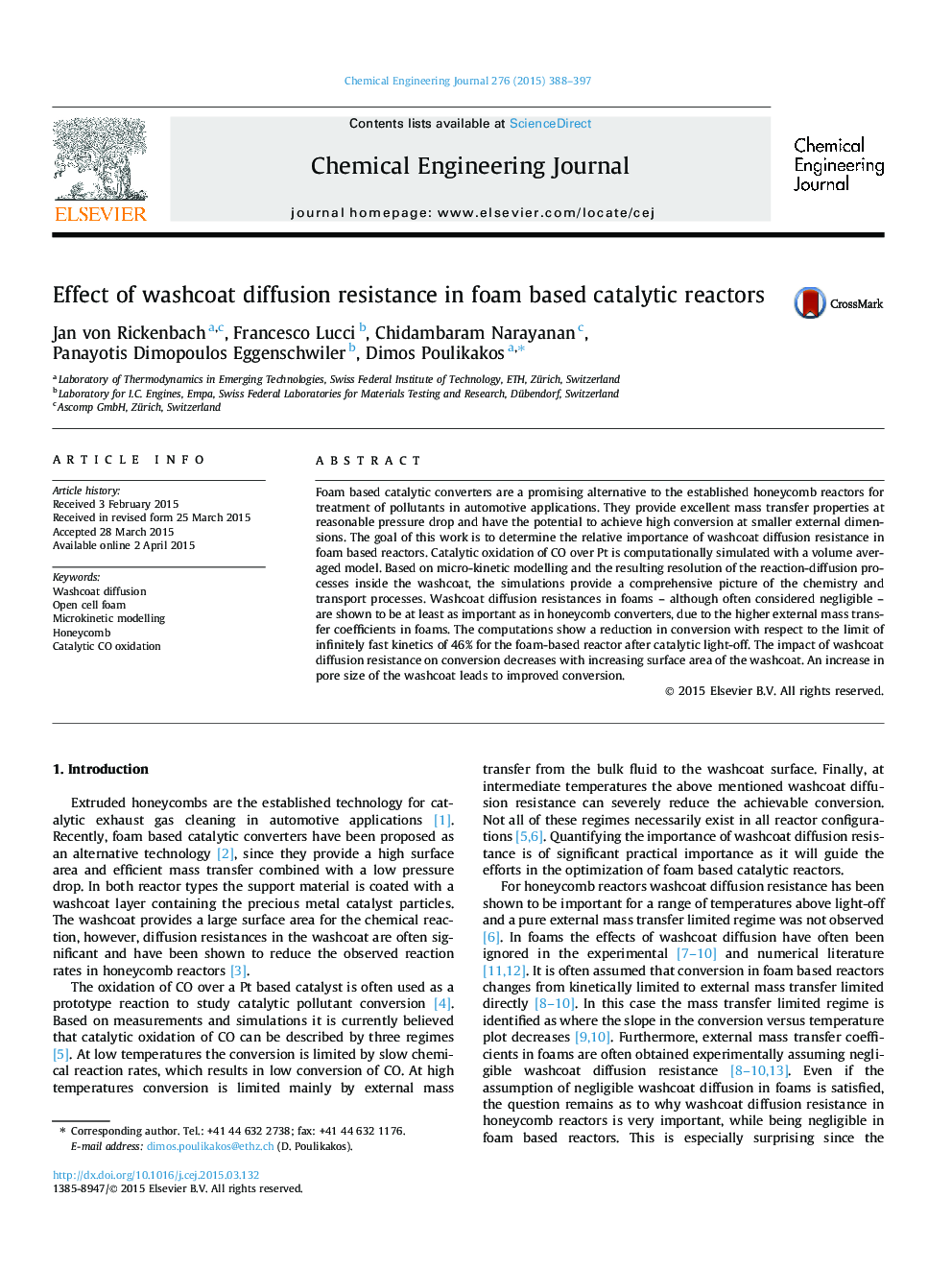| Article ID | Journal | Published Year | Pages | File Type |
|---|---|---|---|---|
| 146251 | Chemical Engineering Journal | 2015 | 10 Pages |
Foam based catalytic converters are a promising alternative to the established honeycomb reactors for treatment of pollutants in automotive applications. They provide excellent mass transfer properties at reasonable pressure drop and have the potential to achieve high conversion at smaller external dimensions. The goal of this work is to determine the relative importance of washcoat diffusion resistance in foam based reactors. Catalytic oxidation of CO over Pt is computationally simulated with a volume averaged model. Based on micro-kinetic modelling and the resulting resolution of the reaction-diffusion processes inside the washcoat, the simulations provide a comprehensive picture of the chemistry and transport processes. Washcoat diffusion resistances in foams – although often considered negligible – are shown to be at least as important as in honeycomb converters, due to the higher external mass transfer coefficients in foams. The computations show a reduction in conversion with respect to the limit of infinitely fast kinetics of 46% for the foam-based reactor after catalytic light-off. The impact of washcoat diffusion resistance on conversion decreases with increasing surface area of the washcoat. An increase in pore size of the washcoat leads to improved conversion.
